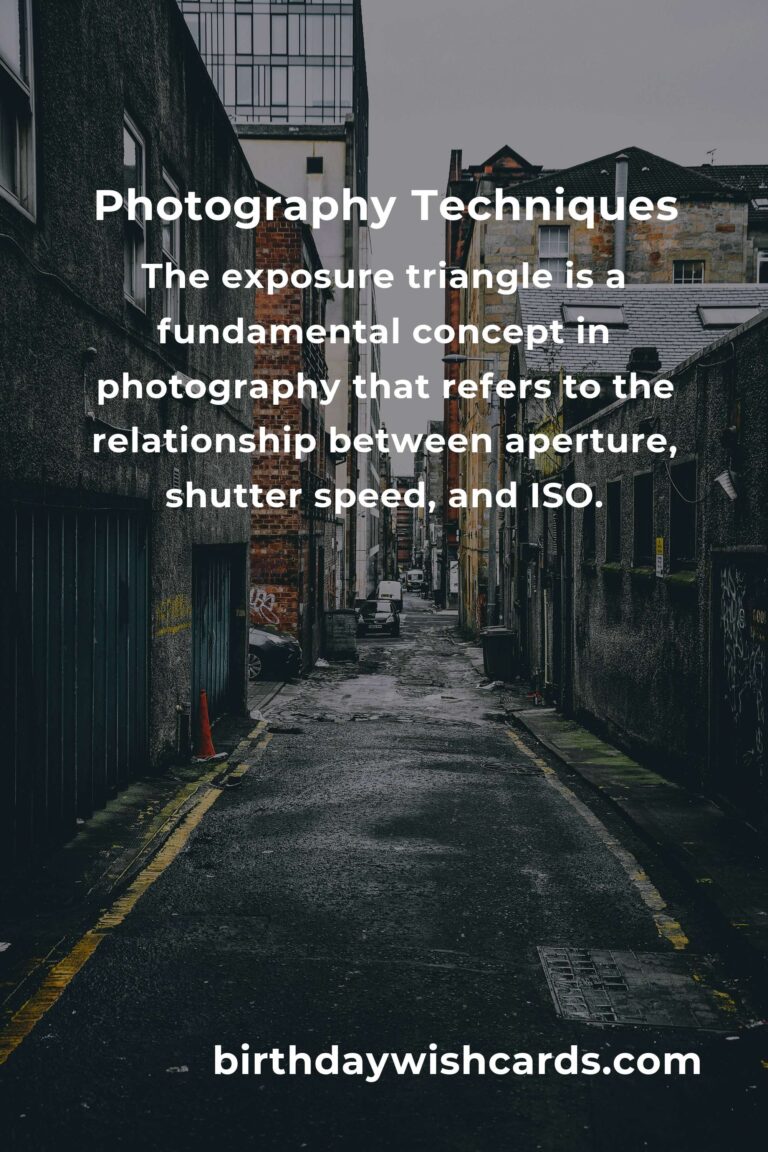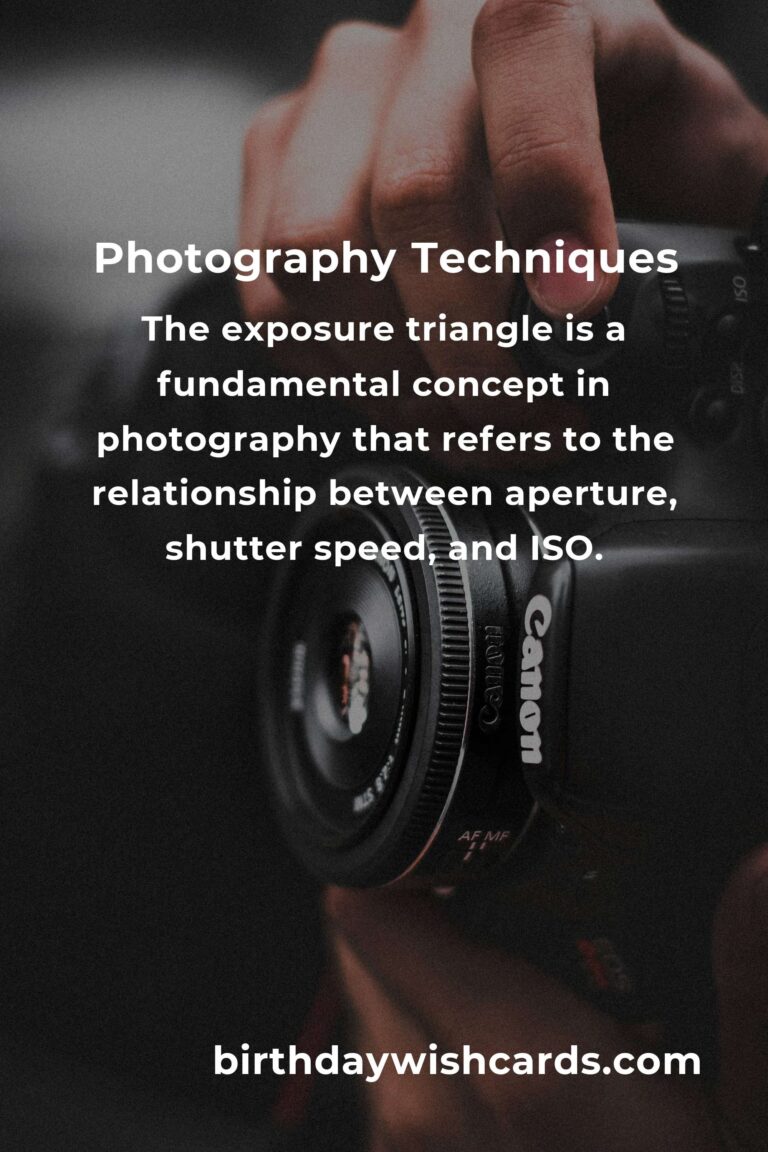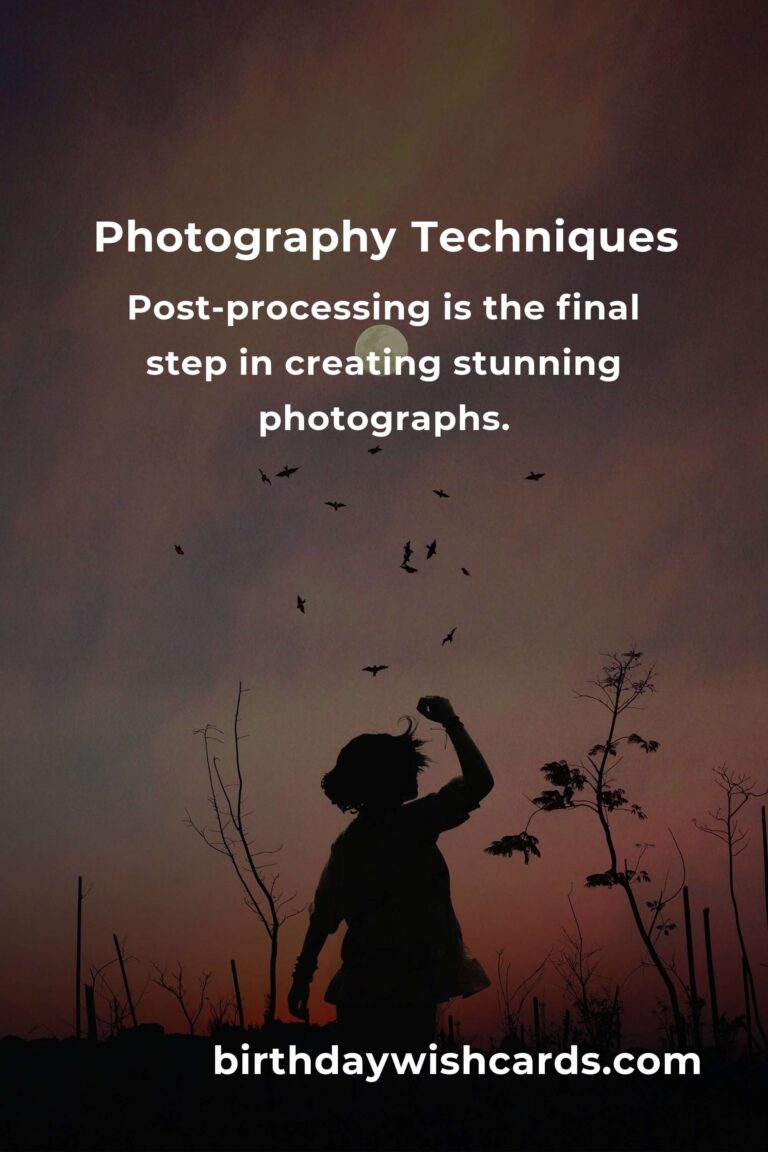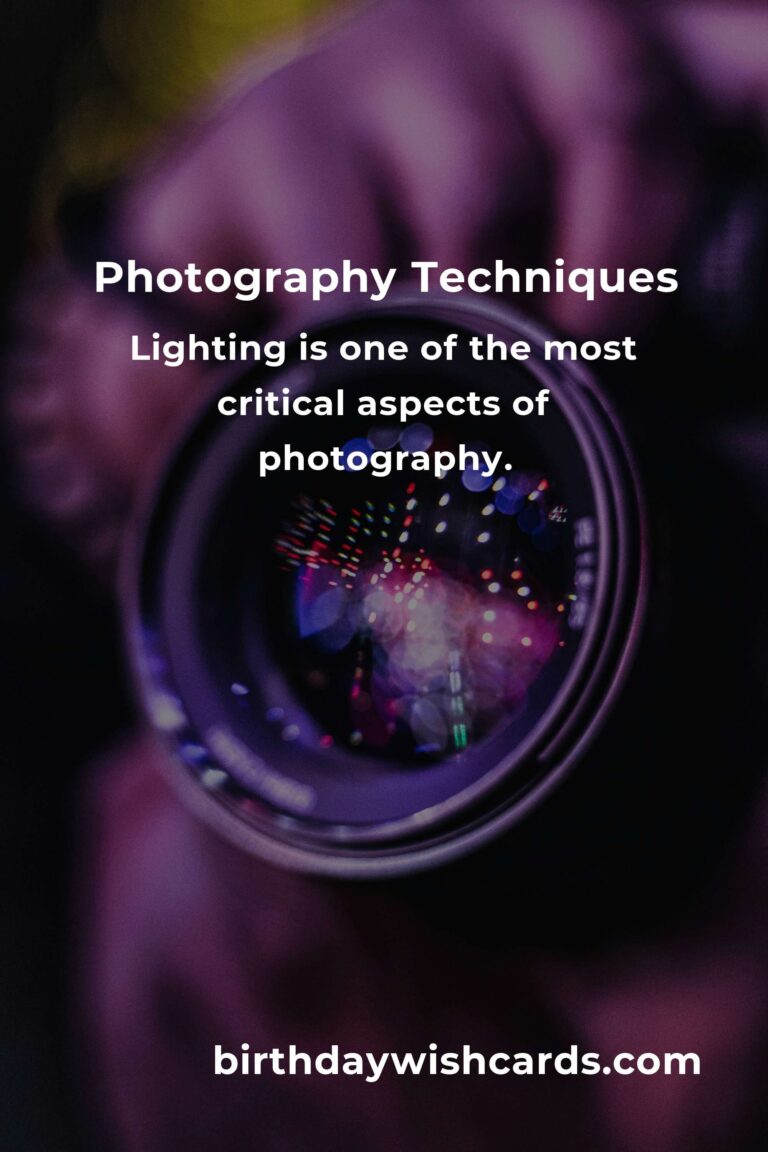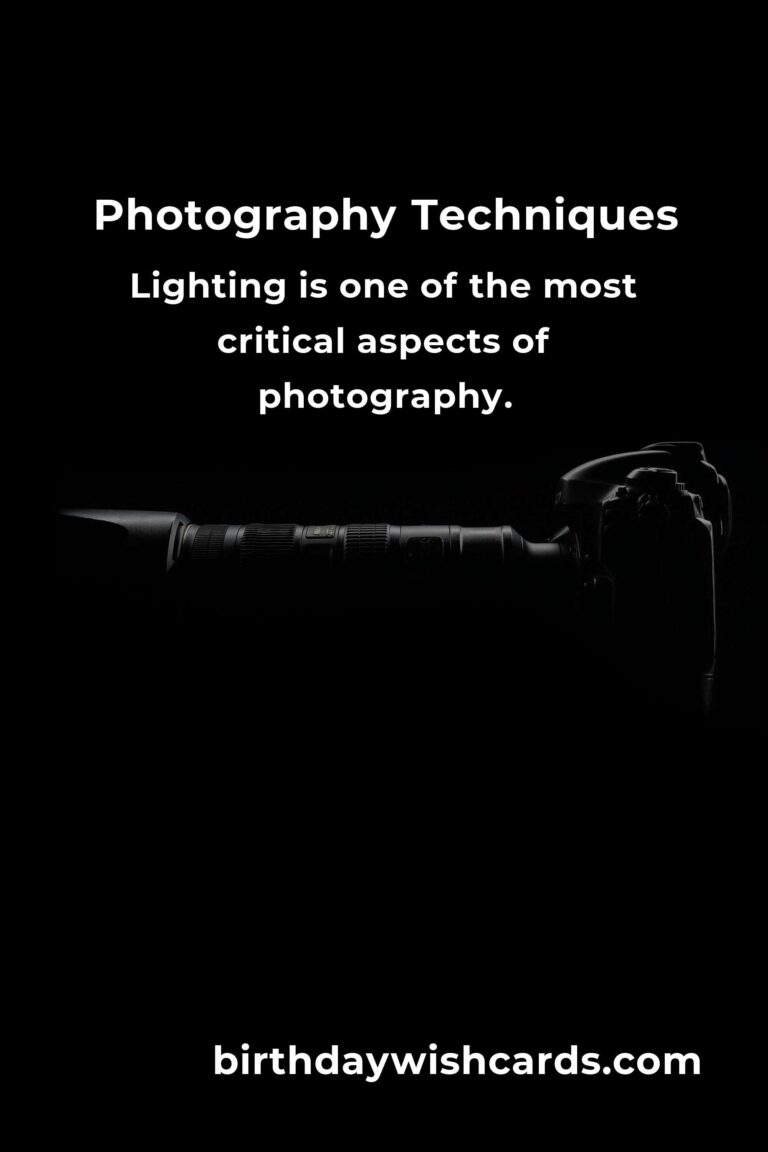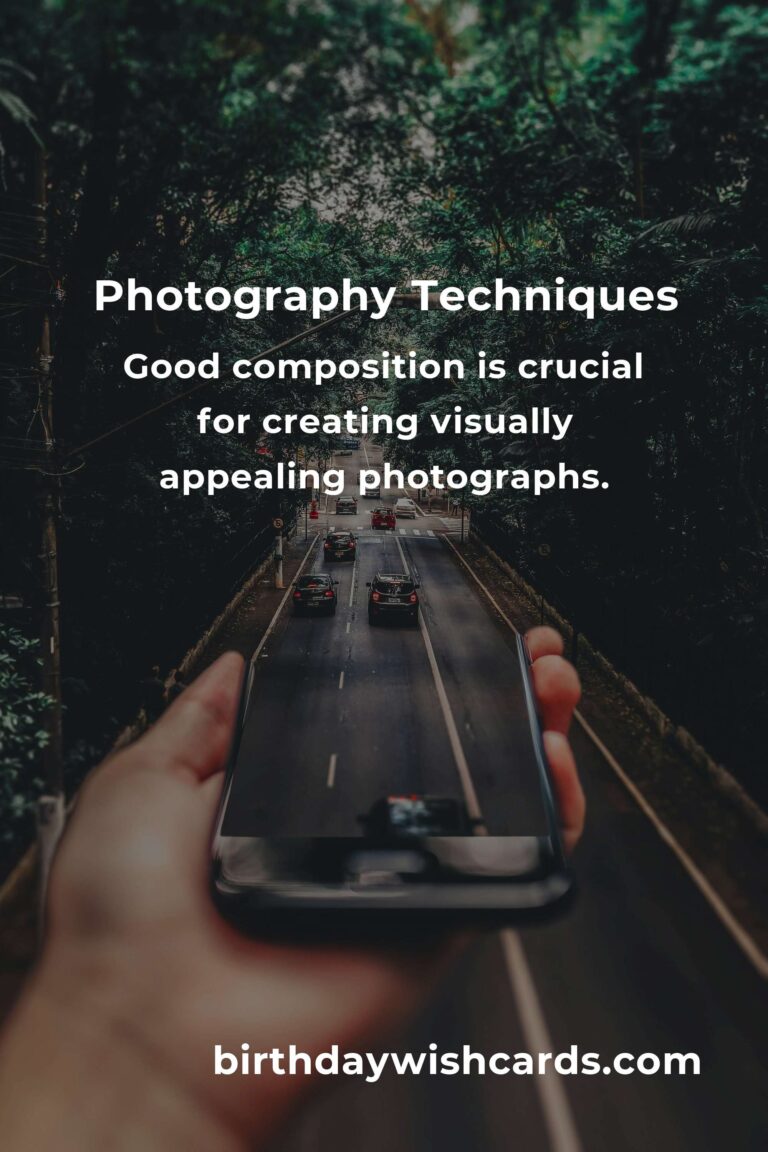
Photography is an art form that allows us to capture moments, emotions, and stories through the lens of a camera. Whether you are a beginner or an experienced photographer, understanding the foundational techniques is vital to improving your skills and creating stunning images. In this article, we will explore five essential photography techniques that every photographer should master.
1. Mastering the Exposure Triangle
The exposure triangle is a fundamental concept in photography that refers to the relationship between three key elements: aperture, shutter speed, and ISO. These components work together to control the amount of light that enters the camera and affects the exposure of your images.
Aperture refers to the size of the lens opening, which determines the depth of field. A larger aperture (smaller f-number) creates a shallow depth of field, ideal for portraits, while a smaller aperture (larger f-number) provides a deep depth of field, perfect for landscapes.
Shutter speed controls the duration the camera’s shutter remains open. A fast shutter speed can freeze motion, while a slow shutter speed allows for motion blur, which can be creatively used in long exposure photography.
ISO measures the camera’s sensitivity to light. A lower ISO is suitable for bright conditions, while a higher ISO is useful in low-light situations. However, higher ISO settings can introduce noise, so it should be used judiciously.
2. Composition Techniques
Good composition is crucial for creating visually appealing photographs. The rule of thirds is a popular technique where the image is divided into a 3×3 grid, and the subject is placed along these lines or their intersections. This creates balance and draws the viewer’s attention to the main subject.
Leading lines are another powerful compositional tool that guides the viewer’s eye through the image. These can be roads, fences, or natural lines like rivers and paths that lead to the focal point.
Framing involves using elements within the scene to create a ‘frame’ around the subject, adding depth and context to the image. This technique can be achieved using natural elements such as trees, archways, or even windows.
3. Understanding Light
Lighting is one of the most critical aspects of photography. Natural light can vary greatly depending on the time of day, weather conditions, and location. The ‘golden hour,’ which occurs shortly after sunrise and before sunset, offers soft, warm lighting that is ideal for capturing beautiful images.
Artificial lighting can be used to control the environment, and understanding how to use flash, reflectors, and diffusers can significantly impact the quality of your photographs. Experimenting with different lighting setups can help you achieve the desired mood and effect.
4. Focusing Techniques
Achieving sharp focus is essential for professional-looking photos. Autofocus can be helpful, but understanding how manual focus works can give you greater control, especially in challenging lighting conditions or when shooting through obstacles.
Depth of field also plays a role in focus. By adjusting the aperture, you can control how much of the scene is in focus, which is especially useful for isolating subjects or ensuring entire landscapes are sharp.
5. Post-Processing Skills
Post-processing is the final step in creating stunning photographs. Software like Adobe Lightroom and Photoshop allows photographers to enhance their images by adjusting exposure, contrast, color balance, and sharpness.
While it’s important not to over-edit, subtle adjustments can help bring out the best in your photos. Learning how to use these tools effectively can elevate your work and give it a professional edge.
In conclusion, by mastering these five fundamental photography techniques, you can significantly improve your skills and create captivating images. Practice regularly, experiment with different settings, and continue learning to develop your unique style. Happy shooting!
Photography is an art form that allows us to capture moments, emotions, and stories through the lens of a camera. The exposure triangle is a fundamental concept in photography that refers to the relationship between aperture, shutter speed, and ISO. Good composition is crucial for creating visually appealing photographs. Lighting is one of the most critical aspects of photography. Post-processing is the final step in creating stunning photographs.
#Photography #ExposureTriangle #Composition #Lighting #PostProcessing



